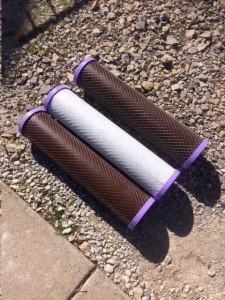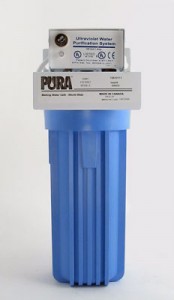The Pure Water Occasional for April 30, 2016
In this Springtime Occasional, you'll hear about the St. Francis Dam and the Mosul Dam, residence time and transit time, new Superfund priorities, Chicago's infrastructure plan, brown tide, and the scary water situation in China. Florida's Indian River Lagoon, rain barrel issues in Colorado, fluoride in black tea, and a nifty edible bottle from Iceland. Learn the function of Peru's puquios, the cause of coral bleaching, the joys of phone sales, and how drinking water killed President Harrison. Finally, Pure Water Annie explains pH, we discuss the importance of home water treatment, you get a chance to win a big motorcycle, and, as always, there is much, much more.
The Pure Water Occasional is a project of Pure Water Products and the Pure Water Gazette.
To read this issue on the Pure Water Gazette's website, please go here. (Recommended! When you read online you get the added advantage of the Gazette's sidebar feed of the very latest world water news.)
How long does a water molecule stay in a river?
by John Donovan
A typical water molecule will stick around in an ocean for, on average, a few thousand years. In rivers, a water molecule won’t dawdle as long — just a couple weeks to several months. But a water molecule hunkered down in groundwater might be around for 10,000 years.
Scientists have a name for how long water molecules remain in any given system: “residence time.” And “transit” or “travel” time is how long it takes for water to get through a system.
Kevin McGuire, PhD, an associate professor of hydrology at Virginia Tech, explains the difference like this: If you could take the age of every human being on the planet right now, you would get an average age — or the average time, at this moment, that people reside on Earth. That’s “residence” time.
But that, McGuire says, is different from taking the average age of everyone who passes away today — those who pass through the system of life. That would be the “transit” time.
But going back to water, residence time and transit time are crucial measurements when it comes to taking care of this critical natural resource.
Measuring a moving target
Getting a grip on these numbers can help us understand and protect our environment. They can be used for things like predicting how a pollutant will affect any given system, or how quickly pollution might move through a system. Scientists, given better ways to track water and its movements, might be able to show more accurately how much water is in any given system, or how safe that water is, or how it might be replaced.
But those numbers aren't easy to figure out. “The idea of this water residence time, or the travel time or the age, it’s really sort of where some of the cutting-edge science is,” says McGuire. “We’ve had a theory for some time to suggest that we need to go after this. It’s like a Holy Grail.”
And to figure out how water slips from one place to the next — or how long it stays put — scientists have to measure “tracers” in the water. Think of them as water-based fingerprints. “You have to have something in the water that moves like the water,” McGuire says.
One widely used tracer is tritium, a radioactive isotope in hydrogen. Tritium occurs naturally only in small amounts, but nuclear bomb testing in the late 1950s and ‘60s released much more into the atmosphere, and that is now tracked by scientists. Compounds like chlorofluorocarbons in water can be tracked, too.
Getting a grip on water
Because residence times and transit times are only estimations, the findings will differ depending on who’s doing the measuring, what method they’re using and a host of other factors. For example, the Spokane Aquifer Joint Board in Washington state uses this chart from a 1979 book, "Groundwater," that estimates the residence time in oceans and seas to be about 4,000 years. The authors of that book estimated the residence time of rivers to be about two weeks and all the water in the part of the atmosphere that supports life to be less than a week.
Another example: Italian scientists measured the transit time and residence time in a defined body of water — the Adriatic Sea — and even then, the numbers differed depending on where the “tracers” enter the sea. The authors figured the average transit time in the Adriatic is 170 to 185 days. The residence time averaged 150 to 168 days.
Gathering the data
The challenge now in determining these numbers is getting enough data. The technology to gather and analyze samples has been prohibitively expensive until the last decade or so, McGuire says.
That’s getting better, McGuire says, providing more data to crunch and more accurate numbers in the hands of the people caring for different water sources. And it comes none too soon.
According to the United Nations, more than 2 million tons of sewage drain into the world’s waters every day, and every year more people die from unsafe water than die from all forms of violence, including war, according to the United Nations. The World Health Organization reports more than 1 billion people have no access to safe drinking water. By some estimates, 2.200 children die every day from diarrhea caused by unsafe drinking water.
Of all the water in the world, only about 3 percent is freshwater, and some 68 percent of that is locked up in glaciers and ice, according to the U.S. Geological Survey. With so much of that endangered, it’s more important than ever to find ways to use it wisely.
Source: Mother Nature Network. The source article includes videos.
Pure Water Gazette Fair Use Statement
Gazette Famous Water Pictures: The St. Francis Dam
The ill-fated St. Francis Dam, shown above, became one of the largest but least discussed man-made tragedies in US History when it burst in 1928, killing some 450 people.
The St. Francis Dam was a curved concrete gravity dam, built to create a large regulating and storage reservoir for the City of Los Angeles. The reservoir was an integral part of the city's Los Angeles Aqueduct water supply infrastructure. It was located in San Francisquito Canyon of the Sierra Pelona Mountains, about 40 miles (64 km) northwest of Downtown Los Angeles, and approximately 10 miles (16 km) north of the present day city of Santa Clarita.
The dam was designed and built between 1924 and 1926 by the Los Angeles Department of Water and Power, then named the Bureau of Water Works and Supply. The department was under the direction of its General Manager and Chief Engineer, William Mulholland.
At 11:57 PM on March 12, 1928, the dam catastrophically failed, and the resulting flood took the lives of as many as 431 people. The collapse of the St. Francis Dam is considered to be one of the worst American civil engineering disasters of the 20th century and remains the second-greatest loss of life in California's history, after the 1906 San Francisco earthquake and fire. The disaster marked the end of Mulholland's career.
St. Francis Dam, after the deluge.
New Sites Added to the EPA Superfund's National Priorities List
Superfund Action Pays Off
The U.S. Environmental Protection Agency (EPA) added five and proposed to add eight hazardous waste sites to the Superfund program’s National Priorities List (NPL). These are sites with known or threatened hazardous waste releases that could pose risks to public health, water quality, and the environment.
“Cleaning up hazardous waste sites is vitally important to the health of America’s communities," Mathy Stanislaus, assistant administrator for EPA’s Office of Land and Emergency Management, said. “Our goal is to give communities the best opportunity for productive use of a site after it is cleaned up.”
Superfund Cleanups Have Documented Health Benefits to Communities
A site’s addition to the NPL helps address potential adverse human health impacts. Academic research shows that investment in Superfund cleanups reduces the incidence of congenital abnormalities in infants by as much as 25% for those living within approximately a mile and a quarter of a site.
Cleanups involving lead-contaminated soil have contributed to documented reduced blood-lead levels in children. If left unaddressed, elevated blood-lead levels may result in irreversible neurological deficits, such as lowered intelligence and attention-related behavioral problems.
Cleanups Stimulate the Local Economy
“Adding a site to the NPL generates new jobs and creates stronger local economies that will strengthen communities for years to come,” Stanislaus continued. “A study by researchers at Duke University and the University of Pittsburgh found that once a site has all cleanup remedies in place and is deleted from the NPL, nearby property values increased 18.6% to 24.5% as compared to their pre-NPL proposal values. Moreover, cleanups increase local communities’ and state governments’ tax revenue, and help to create jobs during and after cleanup. For example, at 454 of the 850 sites supporting use or reuse activities, EPA found, at the end of fiscal year 2015, that approximately 3,900 businesses had ongoing operations that were generating annual sales of more than $29 billion and employing more than 108,000 people.”
Cleanups Make Unusable Properties Usable
More than 850 Superfund sites nationwide have some type of actual or planned reuse underway.
For example, in the town of Corinna, Maine, the Maine Department of Environmental Protection, local officials and stakeholders worked together to integrate a reuse plan for the Eastland Woolen Mill Superfund site. The 22-acre site is a former textile mill that operated from 1909 to 1996. Disposal practices resulted in extensive contamination of soil, groundwater and numerous private drinking water wells.
With EPA support, this collaboration resulted in the Corinna Village Center Reuse Plan, which focuses on mixed-use redevelopment of downtown Corinna and includes commercial, residential and recreational areas.
Superfund Action Makes Polluters Pay for Cleaning Up the Messes They Create
Under Superfund law, only sites EPA adds to the NPL are eligible to receive federal funding for long-term, permanent cleanup. The list serves as the basis for prioritizing both enforcement actions against potentially responsible parties and long-term EPA Superfund cleanup funding. The Superfund program operates on the principle that polluters should pay for the cleanups rather than passing the costs on to taxpayers. EPA searches for parties legally responsible for contaminating a site, and holds those parties accountable for cleanup costs.
The sites in today’s rules potentially affect drinking water, groundwater, soil, wetlands and fishing for human consumption. Contaminants found at the sites include arsenic, mercury, uranium, cadmium, copper, manganese, zinc, aluminum, chromium, lead, trichloroethane (TCA) and trichloroethylene (TCE).
The following five sites were added to the NPL in April,1015:
1. Illinois - Old American Zinc Plant (former zinc smelter) in Fairmont City
2. Iowa - PCE Former Dry Cleaner (former dry cleaner) in Atlantic
3. Nebraska - Iowa-Nebraska Light & Power Co. (former gas plant manufacturer) in Norfolk
4. New Jersey - Former Kil-Tone Co. (former pesticides manufacturer) in Vineland
5. New Mexico - Lea and West Second Street (groundwater plume) in Roswell
The following eight sites have been proposed for addition to the NPL:
1. California - Argonaut Mine (former hard rock mining area) in Jackson
2. Colorado - Bonita Peak Mining District (former hard rock mining area) in San Juan County
3. Indiana - Riverside Ground Water Contamination (groundwater plume) in Indianapolis
4. New York - Wappinger Creek (site of various former industrial operations) in Dutchess County
5. Ohio - Valley Pike VOCs (former tire and heavy duty truck molding manufacturer) in Riverside
6. Puerto Rico - Dorado Ground Water Contamination (groundwater contamination) in Dorado
7. Texas - Eldorado Chemical Co. Inc. (former cleaning products manufacturer) in Live Oak
8. West Virginia - North 25th Street Glass and Zinc (former glass and zinc manufacturer) in Clarksburg
Access to the federal register notices and supporting documents for the final and proposed sites; how a site is listed on the NPL; information about the Superfund Redevelopment Initiative; information on the 35th anniversary of Superfund; and information on the Comprehensive Environmental Response, Compensation and Liability Act can be found on the EPA website.
Learn more about the Superfund from the EPA Website.
Water News
A new study shows that 80 per cent of groundwater in China’s major river basins is unsafe for humans
Smog has a greater association to China than water quality, but that will change following a water quality report from the Chinese Ministry of Water Resources. Citing the study, the South China Morning Post reported around 80% of Chinese mainland groundwater resources are not safe for human contact.
More than 2,100 wells along the Yangtze, Yellow, Huai and Hai Rivers were tested for industrial and agricultural pollution, which were determined the biggest threats to the nations’ water standards.
According to the report from the South China Morning Post, “groundwater was contaminated by toxic heavy metals and organic pollutants” in addition to nitrate pollution.
Approximately 47% of wells fell into the extremely bad quality category, called fifth grade, with another 30% in the bad quality category, titled fourth grade. Not one well fell into the excellent category for water quality. The fourth and fifth grade wells were deemed too polluted for human contact.
The South China Morning Post noted 20-year-old standards used to determine the water quality do not cover petrochemical pollutants, meaning the reports may not be a complete reflection of China’s water pollution. Details: South China Post.
An Austrian designer has invented a bottle that turns air into water..Details.
Replacing Water Mains in Chicago
Chicago has more than 4,000 miles of water mains under city streets. In 2012, the city announced a 10-year plan to replace 900 miles of water pipes. The mains are not made of lead, but nearly 80 percent of the water lines that connect up to the water mains and bring water into homes and businesses are lead pipes — and that's the problem, says attorney Steve Berman.
Berman filed a class-action lawsuit on behalf of three Chicago residents who say the city's process of replacing water mains actually disturbs the lead service lines and increases the amount of lead in the drinking water. He says the city failed to warn residents or to tell them how to reduce the risk of lead contamination from their taps. Details.
A study has found that half of the water treatment plants in Ireland are at risk of failure. Details.
As many as 1.5 million lives are at stake if Iraq's Mosul Dam fails. Most experts believe that it's just a matter of time. You should read this story with the St. Francis Dam disaster in mind. Details.
In England a landlord was arrested for cutting off water service of a tenant who was behind on his rent. Details.
Words cannot describe the immense loss of life unfolding along a 50-mile stretch of Florida's Indian River Lagoon.
More than 30 species of fish, estimated in the hundreds of thousands, have started floating to the surface and washing up along shores. In some places, the normally idyllic waterways are being replaced with thousands of rotting fish.
These include stingrays, horseshoe crabs, sheepshead, the mullet, the flounder and more.
Why the sudden die-off? Thanks to El Nino, parts of Florida received triple the amount of water that's normal for January, leading to massive torrents coursing through urban environments and picking up synthetic fertilizers and other pollutants. This potent mix helped feed a toxic algae bloom, resulting in a "brown tide" that robbed oxygen from the water and effectively suffocated marine life.
As for who is to blame, over-development over the past fifty years and the overuse of lawn fertilizers certainly are a big part of the problem. Reference: Mother Nature Network.
A Chinese farmer lost 25 tons of fish when they were sucked down a sinkhole that developed in his pond. Details.
It is illegal to have a rain barrel in Colorado, but that may change. Details.
Tea, especially black tea, contains high levels of fluoride, and heavy tea drinking can lead to skeletal fluorosis, a painful bone disease that is often misdiagnosed. Making tea with fluoridated water is certainly not advised. A cup of tea can contain 3 to 4 ppm fluoride. Details
Satellite photos have revealed that the mysterious ancient holes in Peru called puquios are actually part of a sophisticated hydraulic system constructed to retrieve water from underground aquifers. Full story.
Was President Harrison Killed by Polluted Water?
It is generally believe that the first U.S. President to die in office, William Henry Harrison, died from pneumonia contracted from giving a long outdoor speech in chilly weather. Evidence now, however, suggests that Harrison died from enteric or typhoid fever related to Washington’s water supply. During that era, untreated human waste was routinely dumped near a public water supply six blocks from the White House and it was not uncommon to see human excrement floating in the water. Details.
The Carthage College Lady Reds finished off a successful weekend at home Collegiate Water Polo Association action with a 14-9 drubbing of Connecticut College. Details.
Coral Bleaching
Warmer water temperatures can result in coral bleaching. When water is too warm, corals will expel the algae living in their tissues causing the coral to turn completely white. This is called coral bleaching. When a coral bleaches, it is not dead. Corals can survive a bleaching event, but they are under more stress and are subject to mortality.
In 2005, the U.S. lost half of its coral reefs in the Caribbean in one year due to a massive bleaching event. The warm waters centered around the northern Antilles near the Virgin Islands and Puerto Rico expanded southward. Comparison of satellite data from the previous 20 years confirmed that thermal stress from the 2005 event was greater than the previous 20 years combined.
A healthy reef is dark. When a reef loses its vigor it begins to bleach and turns visibly white. These days, bleached reefs are what you’re most likely to see. A recent survey of the 1,400-mile-long Great Barrier Reef found that out of 520 reefs surveyed, 95 percent were experiencing “severe” bleaching. In fact, only four reefs that showed no signs of bleaching.
A huge subglacial lake has been discovered beneath the ice in Antarctica. Details.
India delivers water by train as drought in west intensifies. India is deploying trains loaded with tanks of water as it tries to alleviate drought in parched western areas of the country.
In Iceland a student has developed a water bottle made of algae that is edible and biodegradeable. Details.
The entire North Texas community Chisholm Springs is complaining to state officials that their Barnett Shale water is making them sick. Details.
Physician Mark Hyman, a practicing family physician and best-selling author, has recently made a strong statement about the medical implications of adding fluoride to tap water.
Dr. Hyman writes: “There are numerous mechanisms by which uncontrolled dosing of fluorides through water fluoridation can potentially harm thyroid function, the body and the brain. A malfunctioning thyroid often leads to weight gain. And diabetics and patients with kidney disease are often thirsty, causing them to consume increased amounts of fluorides if they have access to only fluoridated water. Communities of color and the underserved are disproportionately harmed by fluorides because most rely on municipal water sources, many of which continue to add fluoride, despite research showing the potential harms and negating the potential benefits. I support federal investigative hearings looking into why our cities and towns are allowed to continue to add fluoride to public water sources and why the whole story about fluorides is only just now coming out.” (April 1, 2016)
What People Call Us About
by Gene Franks, Pure Water Products
When we say phone sales at Pure Water Products we don't mean telemarketing or cold calling. All phone work here is incoming. When the phone rings, we answer it and do our best to help the caller, whether he or she wants to buy something, has a complaint, needs help installing or trouble-shooting a product, or just wants information. The only people we call are people who have asked us to call them.
Phone work is the hardest and scariest part of our business, because when the phone rings it can be anyone with any kind of question or problem. People who answer the phone learn quickly that you can't know everything and that when you don't know the answer to a question the best thing to do is say that you don't know and offer to get the information and call or email back. We say "I don't know" a lot.
Here are some of the things we get most questions about-- not necessarily in order of frequency.
- Removing chloramines from city water.
- The kinds of plastics tubing and filter housings are made of, and don't we have any made of glass.
- Removing iron, manganese, and/or hydrogen sulfide from well water.
- Removing fluoride and arsenic from water.
- Adding minerals to reverse osmosis water.
- What are reverse osmosis tanks made of.
- Raising pH in well water and in reverse osmosis water.
- Salt-free "softeners."
- Spot-free car washing (my own least favorite topic).
- Sizing everything: whole house city water filters, iron filters, water softeners, retention tanks, and a lot more.
- Troubleshooting undersink reverse osmosis. Most frequent question: Why isn't my RO unit making enough water?
- Pressure drop questions about whole house filters.
- Country of origin of products. (There is much interest now in "made in USA" products, and they're getting harder and harder to find.)
- Help in identifying and buying replacement parts.
No, sir, I haven't seen the video that proves that drinking reverse osmosis water turns your bones to mush. Could you send me a link?
We're proud that we answer the phone six days a week during Texas business hours and usually a couple of hours after. If you've tried calling other internet water treatment sources you know that we're the exception to the usual.
This is a hard business and we aren't perfect, but we do our best. Keep in mind that there isn't a college course about how to answer questions about water treatment, so the staff who answer our phones learn to talk on the phone by talking on the phone. It's like learning to swim by jumping out of the boat. Also keep in mind that our phone sales people are mainly occupied with office management, website design and maintenance, managing inventory, bookkeeping, packing packages, and a lot more. So be patient with us. Not a single one of us has a degree in phone sales.
Win this Native American Chief Motorcyle
Pure Water Products' Unique Recycled Contest
To be clear, it’s the contest that’s recycled. The motorcycle is brand new.
One of our suppliers is giving away this beautiful Native American Chief motorcycle. As beautiful as it is, we don’t need a big motorcycle, so if we win, we’ll make a random drawing from those who enter our contest and give the motorcycle to the winner. While this may seem like a long shot, by our calculation your chance of winning this motorcycle from us is at least 3,586,334 times better than your chance of winning the Texas lottery. Plus, it’s free.
To enter, just give us your email address. No name or phone number needed–just your email address.
To enter by email, just send your email address to pwp@purewaterproducts.com. Please add the subject line: Motorcycle Contest. Deadline is November 30, 2016.
The Meaning of the pH of Water. Another Installment in Pure Water Annie's Water Treatment 101 Series
Pure Water Annie's technical articles appear regularly in the Pure Water Occasional.
The term pH is used to describe the activity of the hydrogen ion in a solution. It measures the relative acidity and alkalinity of the solution. It is not a measure of quantity but of the relationship between acidity and alkalinity.
The pH scale ranges from 0 to 14, with a value of 7 considered neutral. Pure water is considered to be neutral, pH 7.0, although most water ranges between 6.0 and 8.0 on the scale. Values above 7.0 are considered alkaline and below 7.0 acidic.
The pH value of water decreases as the amount of carbon dioxide, CO2, increases, and pH increases as the amount of bicarbonate alkalinity increases. The ratio of carbon dioxide and bicarbonate alkalinity within the ranges of 3.6 to 8.4 is an indication of the pH value of the water.
The pH of water figures into almost all aspects of water treatment. The reduction of such contaminants as iron, manganese, arsenic, fluoride, and hydrogen sulfide is highly dependent on the pH of water. Water that is low in pH is corrosive and must be corrected. Even disinfection of water with chlorine is highly dependent on pH.
As far as health is concerned, there is no evidence to support claims by sellers of pH amending machines that only highly alkaline water is suitable for drinking.
pH Adjustment in Water
The pH can be raisedby feeding soda ash (sodium carbonate), caustic soda (sodium hydroxide), sodium
bicarbonate, or potassium hydroxide into the water. Calcite (calcium carbonate, CaCO3) and/or Corosex (MgO—magnesium oxide) are used as filters to increase pH from the 5 and 6 range. The peak flow of neutralizing filters is limited to about 6 gpm per square foot of medium. Downflow filters must be backwashed frequently to prevent “cementing” of the bed. Upflow filters do not experience cementing of the bed, but they do not work if iron is present in the water.
Lowering pH is less frequently done, but can be accomplished by feeding a variety of acids with a standard metering pump. Both sulfuric and hydrochloric acids will work, but weaker acids are usually preferred. The most commonly used are phosphoric acid (H3PO4), acetic acid (CH3COOH), and citric acid (C6H8O7). Vinegar can also be injected to lower pH.
Typical pH levels of some of the liquids we encounter:
| Sea Water = 8.6 pH | Soda = 2.5 pH |
| Mineral Water = 7.4 pH | Sports Drink = 2.9 pH |
| Tap Water = 6 -8 pH | Coffee = 4 pH |
| RO Water = 5-7 pH | Beer = 4.5 pH |
City Water: Take Nothing for Granted
The two discolored carbon block cartridges in the photo turned blood red with rust stains and clogged after only two months of service at a home served by a small municipal water supply in Texas. The cartridges are 4.5" X 20" carbon blocks that were installed in tandem, so that each got only half of the water flowing into the home. Use was moderate.
The condition of the filters underlines the lesson that we are learning from news from Flint, Michigan and the many other poor water quality stories that are surfacing involving city water systems. The lesson is that city water is not necessarily as safe as we have always assumed--that it isn't, in fact, being monitored to assure that every drop that comes from the treatment plant is perfect and certainly that every drop that passes through our aging delivery pipes gets to us without contamination.
The logical place to treat water to assure its excellence is at point of entry--where the water enters the home itself. Carbon filtration at point of entry and a high quality drinking water unit under the sink are becoming as common and as necessary as locks on the doors.
Ultraviolet treatment, once used almost exclusively on unchlorinated wells, is now becoming a common fixture in city homes as "boil water" alerts and disinfection failures become more common. UV provides a margin of safety even where water is chlorinated.
Please visit our RO Parts Page for tanks and accessories. We also have dedicated parts pages for countertop water filters, undersink filters, and aeration equipment. We stock parts for everything we sell.
Thank you for reading. Please come back next week.
Places to Visit on Our Websites:
Garden Hose Filters. Don’t be the last on your block to own one. And don't forget that National Garden Hose Day is just around the corner.
Model 77: “The World’s Greatest $77 Water Filter”
”Sprite Shower Filters: You’ll Sing Better!”
An Alphabetical Index to Water Treatment Products
Our famous whole house Chloramine Catcher
Single Tank Aerators for Iron and Hydrogen Sulfide
Pure Water Occasional Archive: Sept. 2009-April 2013.
Pure Water Occasional Archive: April 2013 to present.
Write to the Gazette or the Occasional: pwp@purewaterproducts.com
Please Visit
The Pure Water Gazette – now with an up-to-the-minute feed of the latest water news.
![occasionalbanner300[1]](https://ymlp.com/https.php?id=purewatergazette.net/blog/wp-content/uploads/2013/04/occasionalbanner3001.gif)


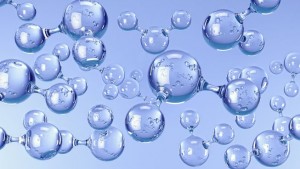
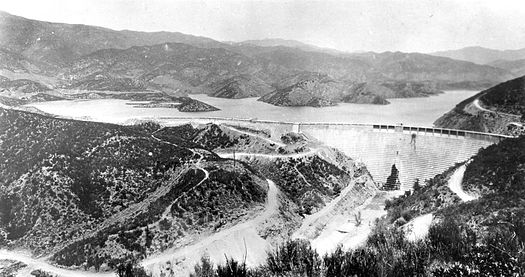
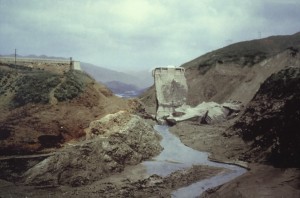
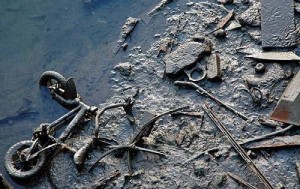
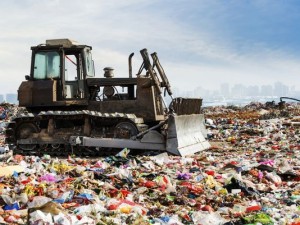
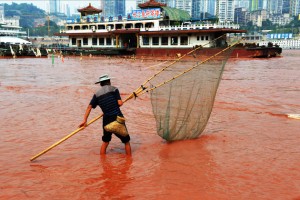

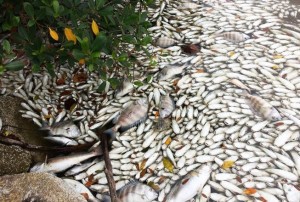
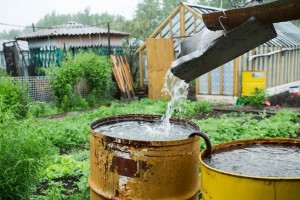
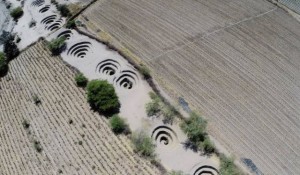
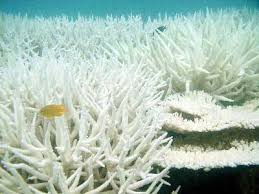




![ph_375[1]](https://ymlp.com/https.php?id=purewatergazette.net/blog/wp-content/uploads/2013/01/ph_3751.jpg)
